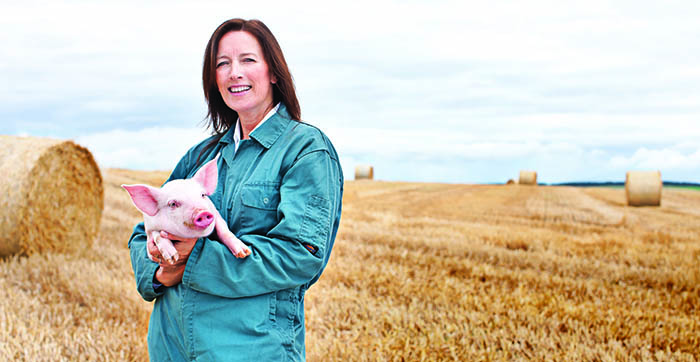Stakeholders in the Scottish pig industry – including producers, vets, pharmaceutical companies, pig specialists and industry bodies – are working together to try to develop a strategy to eliminate a debilitating and costly disease in the Scottish pig herd.
Porcine Reproductive and Respiratory Syndrome (PRRS) is a global problem. It was first seen in pigs in Scotland in 1992 and since then, PRRS has become the single most important endemic disease of pigs across the country.
The PRRS virus infects sows and growing pigs, leading to reproductive failure – characterised by abortions, weak and stillborn piglets and infertility – as well as respiratory problems and increased mortality in young animals. The virus also has an immuno-suppressive effect, which means that animals infected with the PRRS virus are susceptible to repeated infections, often resulting in increased antibiotic use.
The loss of production seen as a result of PRRS has a significant economic impact. The disease is estimated to cost the UK pig industry around £80 per sow, £3.50 per finished pig, or typically £40,000 for a 500-sow herd per year. When this is multiplied by the number of affected herds, this cost is calculated to be around £3 million each year to the UK pig industry.
Pig vet Grace Webster (pictured), chair of the QMS Scottish working group established to try to combat the disease, is convinced that developing a strategy to eliminate the virus from the Scottish pig sector would be a major benefit to the industry.
She said: “Eliminating the PRRS virus in Scotland would undoubtedly improve pig health and welfare by reducing disease and mortality in Scottish pigs.”
Dr Webster added that another advantage of eliminating PPRS would be a reduction in antibiotic use: “As pigs with PRRS are affected by secondary infections, eliminating the virus would help reduce antimicrobial use in pigs and could also reduce abattoir condemnations due to chronic health issues such as pleurisy.”
The first stage of the eradication programme was to determine how many pigs in Scotland are, or have been, exposed to PRRS virus.
Over the last 18 months, blood and oral fluid samples have been collected from pig units across Scotland and tested for the presence of antibodies to the virus. Much of this work was carried out by Allan Ward, QMS Pig Specialist at abattoirs across Scotland, and the remainder were collected by private vets on units not slaughtering pigs in Scotland.
Results show that 40% of pig units in Scotland tested positive for the virus, which, encouragingly, is 15% lower than in 2012/2013. Using this data, the epidemiology team at SAC Inverness have mapped the disease, showing each individual site, by unit type, size and PRRS status.
Phase Two of testing will begin soon and will involve characterising the units that have already tested positive via a more in-depth blood survey. This will identify what strains are present on infected units, which will help inform improvements in biosecurity.
Dr Webster added: “The next key steps towards control and elimination need to be done in a co-ordinated manner within a region, to prevent neighbours re-infecting each other.”




